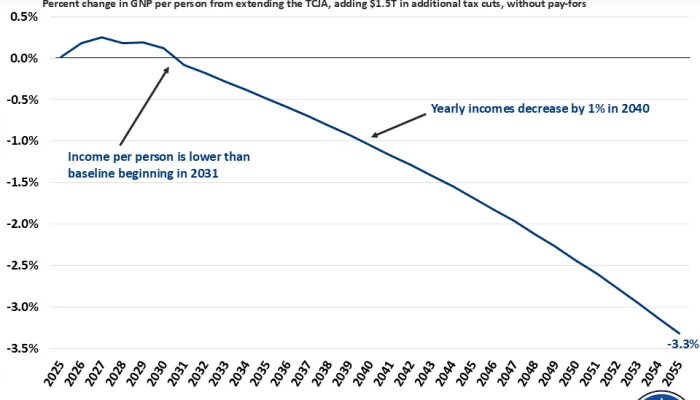There is No Such Thing as Progressive SALT Cap Relief
According to media reports, Congress is considering reforming, rather than repealing, the $10,000 cap on the deduction for State and Local Taxes (SALT) in response to criticisms that full repeal would be highly regressive. In reality, any version of SALT cap relief would be regressive, offering only a nominal benefit for low- and middle-income households.
Of the 121 million households that make up the bottom 60 percent of the income distribution, only about 1.7 million – 1.4 percent – would benefit at all from any form of SALT cap relief, receiving an average tax cut of $370 or less, according to the Tax Policy Center (TPC). The vast majority of households in the bottom three quintiles either pay less than $10,000 in state and local taxes or do not itemize deductions at all.
In fact, only 0.8 percent of the benefit of repealing the current SALT cap would go to the bottom 60 percent of earners. Meanwhile, almost 96 percent would go to the top 20 percent, including 92 percent to the top decile and 54 percent to the top 1 percent.

Tax relief for the bottom 60 percent would average only six dollars ($6) per household, including $15 per household in the middle quintile (the median taxpayer would not benefit at all from SALT cap repeal). That number rises to only $85 for those in the fourth quintile but nearly reaches $2,500 per household for those between the 90th and 99th percentiles and more than $35,000 for the richest 1 percent of households.

So-called “targeted” SALT cap relief would limit the benefit for the highest earning households but would do nothing to boost the small benefit for middle- and low-income households. For example, strictly limiting repeal of the SALT cap to households making less than $1 million in expanded cash income would only increase the share of the tax cut going to the bottom 60 percent of earners from 0.8 percent to 1.6 percent.1 Only 2.6 percent of SALT cap relief would go to the bottom 60 percent with a $500,000 threshold. And even restricting SALT cap relief to households below $200,000 would only deliver 12.3 percent of the benefit to the bottom 60 percent.
For point of reference, the 2017 Tax Cuts and Jobs Act was projected to deliver 35 percent of its benefits to the bottom 60 percent of earners, while the 2020 proposed CASH Act would have delivered 63 percent. Both bills were criticized for being too regressive.

Increasing, rather than repealing, the $10,000 SALT cap would be no more progressive. Estimates from the Tax Foundation find that only about 0.3 percent of the benefit of increasing the cap to $15,000 for singles and $30,000 for couples would go to the bottom three quintiles of earners. (The Tax Foundation model differs from TPC’s; for comparison, the Tax Foundation finds about 0.1 percent of the benefit of full cap repeal would go to these households.) About 85 percent of the benefit from lifting the cap to those levels would go to the top decile, with nearly one-quarter going to the top 1 percent of households.2
No matter how progressive a SALT cap relief proposal seems, any version of SALT cap relief will only offer a $15 per year tax cut to the average taxpayer, and thus no version will be progressive.3
Rather than lift the $10,000 SALT cap, a far more progressive policy – one endorsed by the New York Times editorial board and others – would be to reduce the cap to $0 and repeal the deduction altogether. Most of the benefit of the existing SALT deduction (with the $10,000 cap) goes to households making over $200,000, and almost all goes to households making over $100,000.
In combination with extending the limit to corporations and businesses, eliminating the SALT deduction could raise as much as $50 billion per year – enough to cover approximately half the cost of President Biden’s expanded child tax credit proposal or fully pay for President Biden’s clean energy tax credits.
With debt headed to a new record and trillions of proposed spending to pay for, policymakers should at least avoid weakening the SALT cap.
Simply put, there’s no such thing as progressive SALT cap relief.
Read more options and analyses on our SALT Deduction Resources page.
1 Actual legislation would likely be more regressive than these examples, since it would rely on Adjusted Gross Income or Modified Adjusted Gross Income and likely include a phase-out.
2 Based on additional data provided by the Tax Foundation.
3 This is measured by the average tax cut for taxpayers in the middle quintile. The median taxpayer would in fact receive no tax cut from SALT cap relief.


